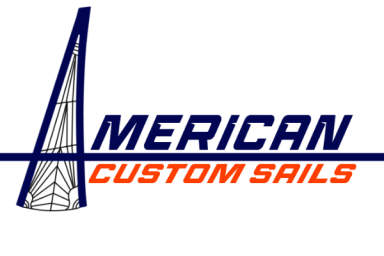
Top Notch Excitement
Designed Fast
Built for speed
Our Sails are modeled using the latest sail design suites, allowing for highly refined and accurate sail designs.
Pushing the limits of a paneled sail. Our super-lens panel layout mimics structured luff technology, allowing for precision trimming and draft control in all conditions.

Durable
With optional protective coverings like liteskin and taffeta and Ultra-PE our sails are built to outlast the competition, while adding minimal weight.
CUtting Edge Materials
Built from the newest and strongest laminate sailcloths. Featuring internal weaves of carbon, technora, aramid, and ultra-PE fibers.
Mainsails
Panel Layouts
Crosscut
Traditional panel development with the panels running horizontally across the boat. Best for small sportboats, racer/cruisers, and modern swept spreader rigs.
Tri-Radial
Using a warp oriented cloth the panels are cut to more evenly transfer loads between the head, tack, and foot. The most common panel layout for a paneled club racing sail, with the most options in different materials.
Hardware
Battens
Racing mainsails are equipped with RBS or Bluestreak battens. All Battens are tapered and are either e-glass or carbon. Batten end fittings can be chosen based on size and use, small sportboats prefer rocket tensioners, while larger full batten yachts use adjustable luff boxes.
Options
Racing Mainsails can be configured with just about any specialty hardware and parts desired. Standard racing mains come with a boom strap for the outhaul, rivetless aluminum or carbon headboard, and sewn in stainless rings or pressed rings. Other options include battcars and upgraded slides or cars, specialty headboard cars, and adjustable batten slides.
Reefing
Racing mainsails come standard with webbing loops on the reef points for attaching a block or reef line direct and tight to the sail. Also available are reefing blocks and low friction rings on both the tack and clew. Add extra reef support with reefing tapes, which are continuous fibers laid from tack to clew to restructure the foot while reefed.
Headsails
Panel Layouts
Crosscut
Traditional panel development with the panels running horizontally across the boat. Best for small sportboats, racer/cruisers, and non overlapping headsails. The most budget friendly full race option.
Tri-Radial
Using a warp oriented cloth the panels are cut to more evenly transfer loads between the head, tack, and foot. The most common panel layout for large overlapping genoas and 30-45' racers.
Superlens
With structured luffs being the new hot tech in the membrane market we worked hard to develop our own variant. The superlens is a paneled sail with structured luff attributes. Derived from proven racing skiff and multihull sails designs which experience high Cunningham loads to flatten and twist off square top mainsails, the superlens's entry shape and camber can be precisely controlled by halyard tension. The layout also incorporates the extreme cloth weight variability of the sectional radial sail removing excess weight while better aligning the loads of the sail.
The superlens uses a set of vertical panels from the luff to the deepest draft point to create a separate section of sail that perfectly outlines the draft forward and creates a molded shape. While the leech is radially cut from a heavier cloth to provide a stiffer and cleaner exit. And the foot cut radially from the clew meeting the luff section and creating a clean transition between all three sections.
Finishes
Hardware
All racing headsails come standard with dyneema head and clew webbing attachments and soft shackle clew for quick sheet changes. Racing headsails can also be equipped with tapered leech or vertical battens, hanks, zipper reefs, telltale windows, or other attachment hardware.
Appearance
Racing headsails can be finished with a variety of visual differences. Chose draft stripe color, sail number color, UV cover color for furling race sails, and even add graphics.

spinnakers
Symmetrical
hardware
Symmetrical spinnakers are finished with stainless Rutgerson Superrings in each corner and colored edge tapes for easy packing. Racers can also order non or partially sewn spinnakers, using AIRX cloth we are able to tape and set our radial seams without having to sew them. The resulting bond is similar in strength to sewing but removes poor stitches, improper tension, and needle holes which can cause weak points in such light material.
Panel Layout
Symmetrical spinnakers are triradial panel layouts with the option of 2 or 3 center crosscut sections. Cloth weight is dependent on boat size and spinnaker purpose but most commonly used are .6 .75 and 1.5 oz.
asymmetric
hardware
Conventional asymmetric race spinnakers use stainless rings in the head and tack. Furling Equivalents use webbing loops instead to promote easier furling and are more gentle on the pivot points when furling. Racing asymmetricals have the option of a soft clew or imbedded dyneema strop. This is where the dyneema is spliced directly into the patches of the sail creating a flush transition from sail to attachment point, as well as fully and equally spreading the load of the sheets through the patches and each panel of the sail.
Panel Layout
Asymmetric spinnakers are only made with triradial panel layouts. Cloth weight is dependent on boat size and spinnaker purpose but most commonly used are .6 .75 and 1.5 oz.
Code sails can be made with from both triradial and superlens panel layouts. Code sails also vary in fabric, gravitating towards ultralight laminates for added shape stability rather than conventional nylon spinnakers.
Furling
We use primarily Facnor and Profurl continuous line top down furlers. These can be fitted to any new asymmetric spinnaker or code sail.
We need your consent to load the translations
We use a third-party service to translate the website content that may collect data about your activity. Please review the details in the privacy policy and accept the service to view the translations.








